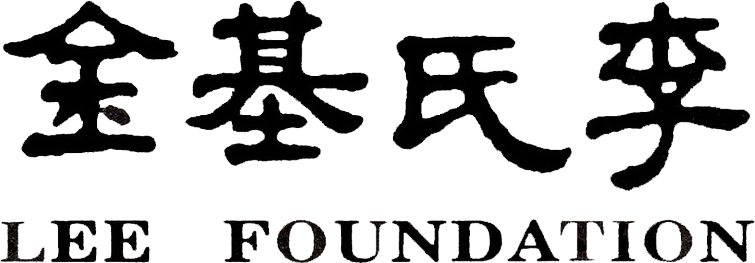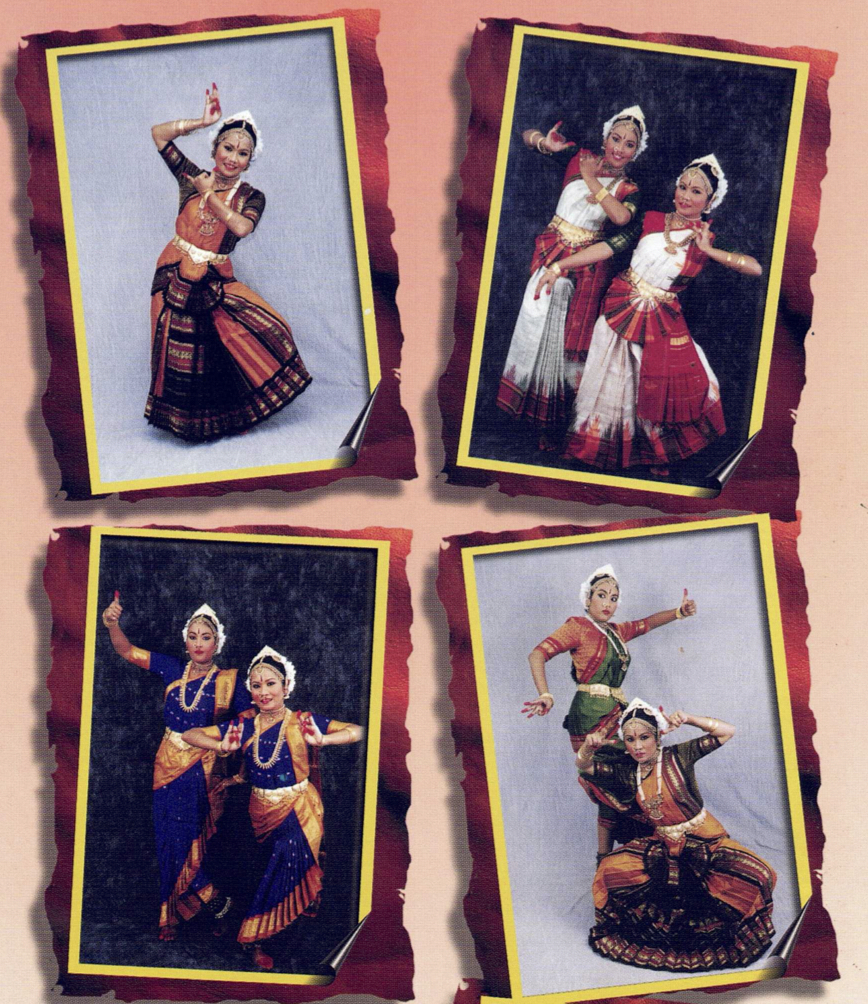
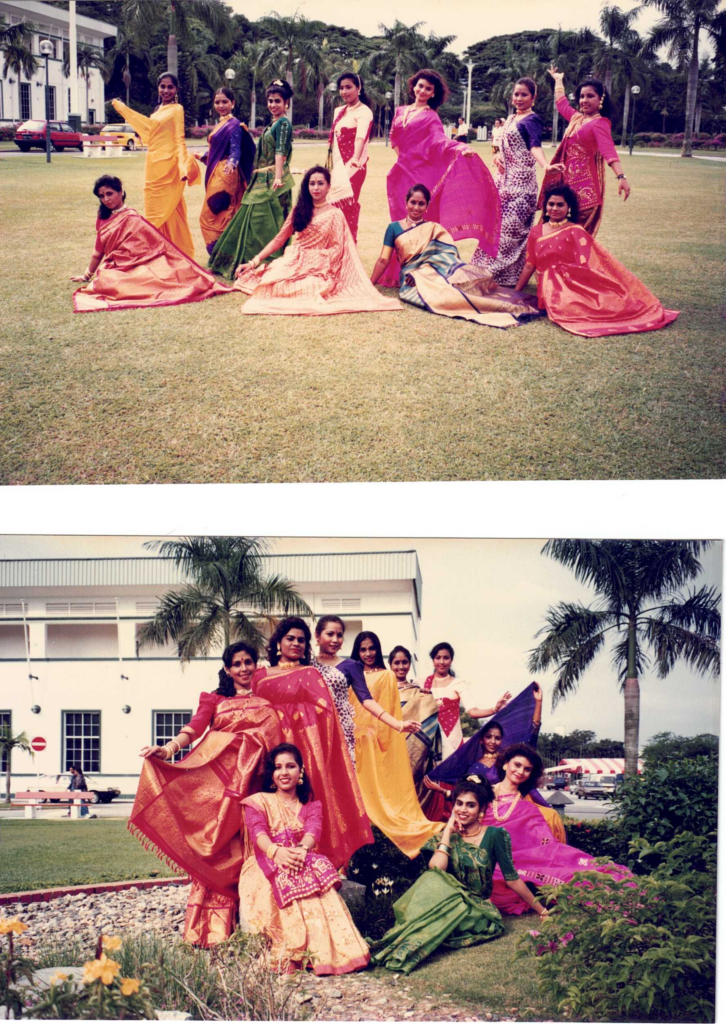
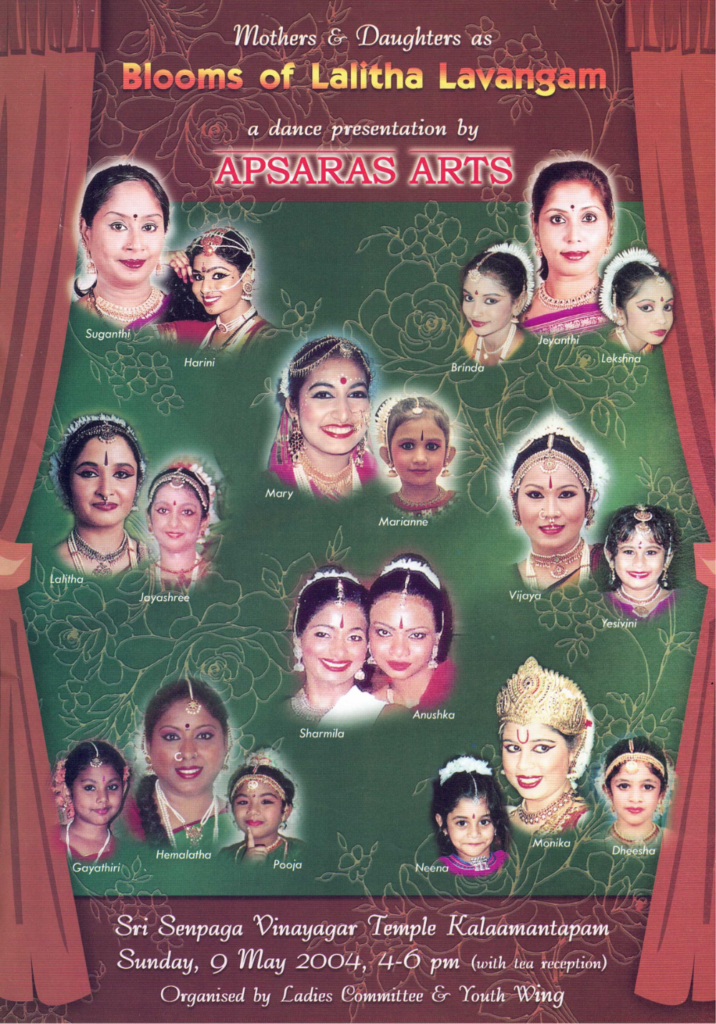
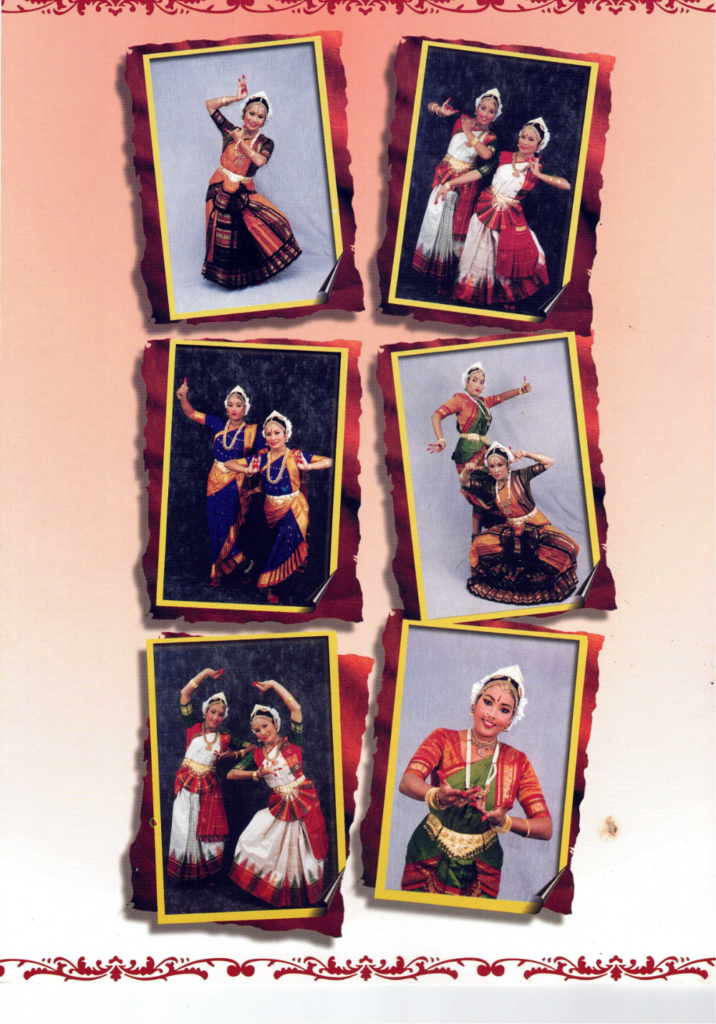
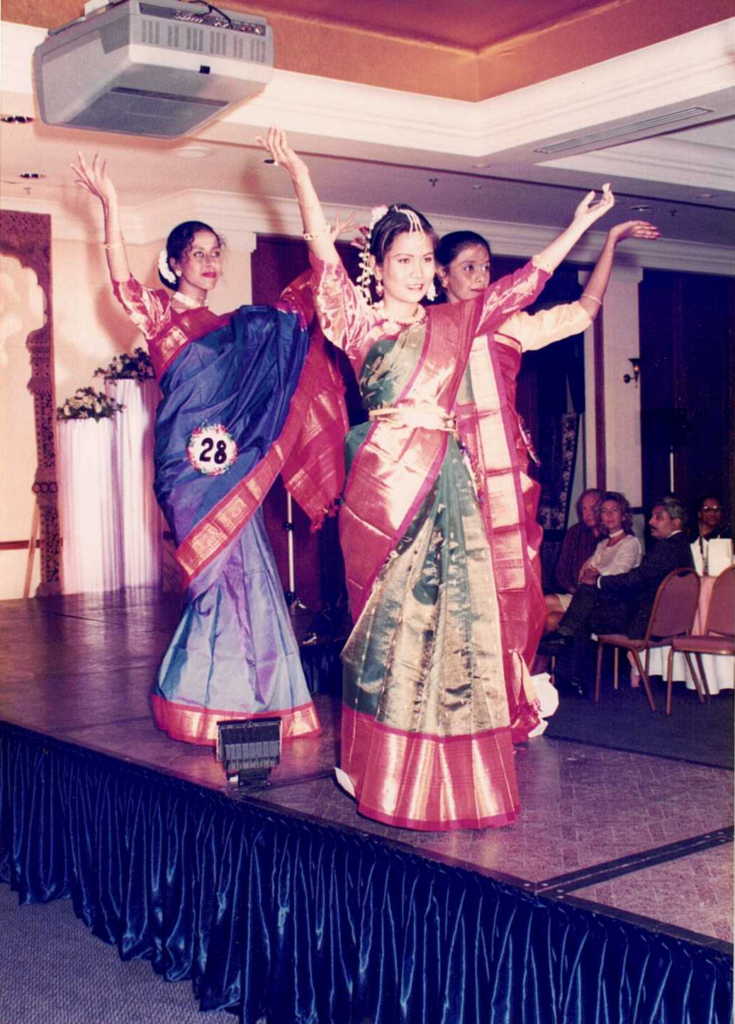
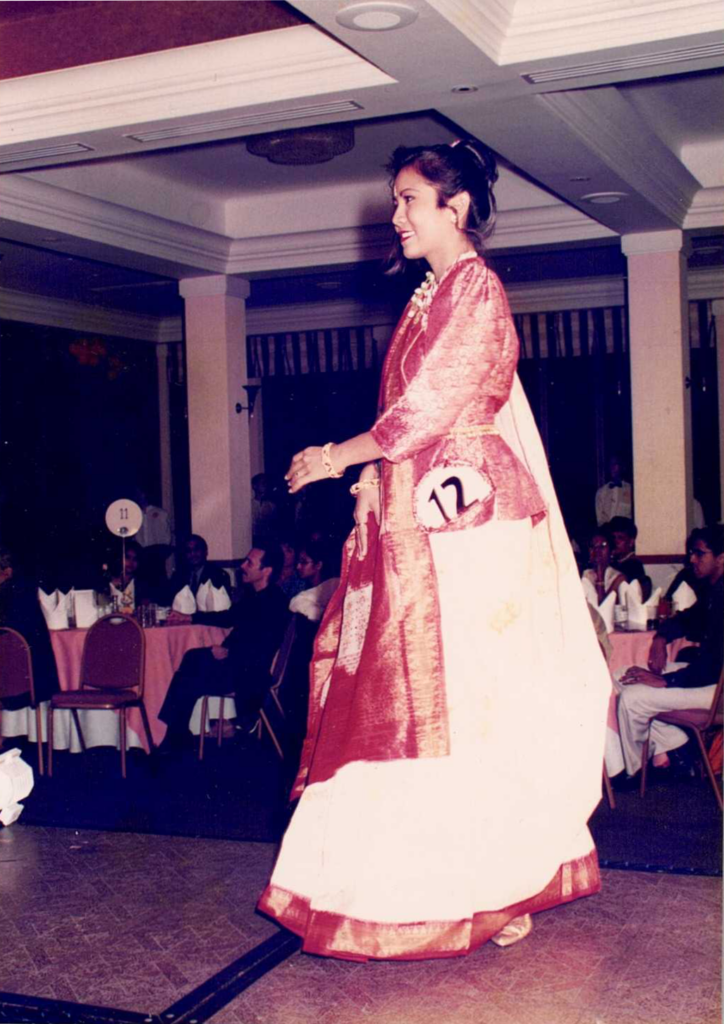
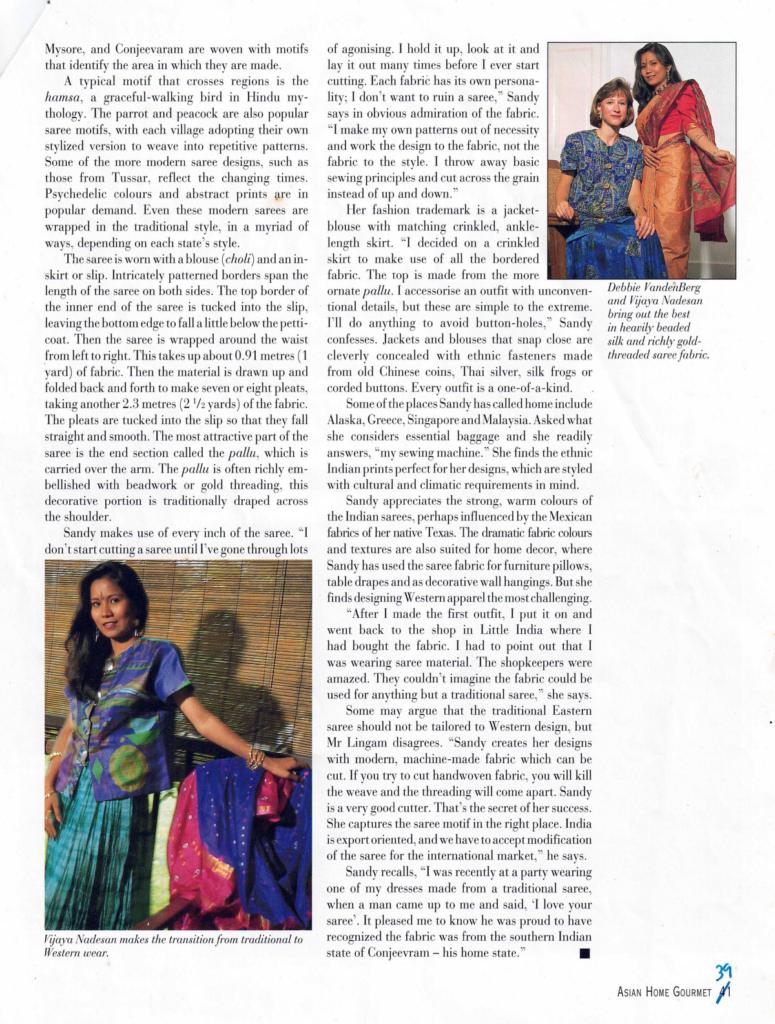
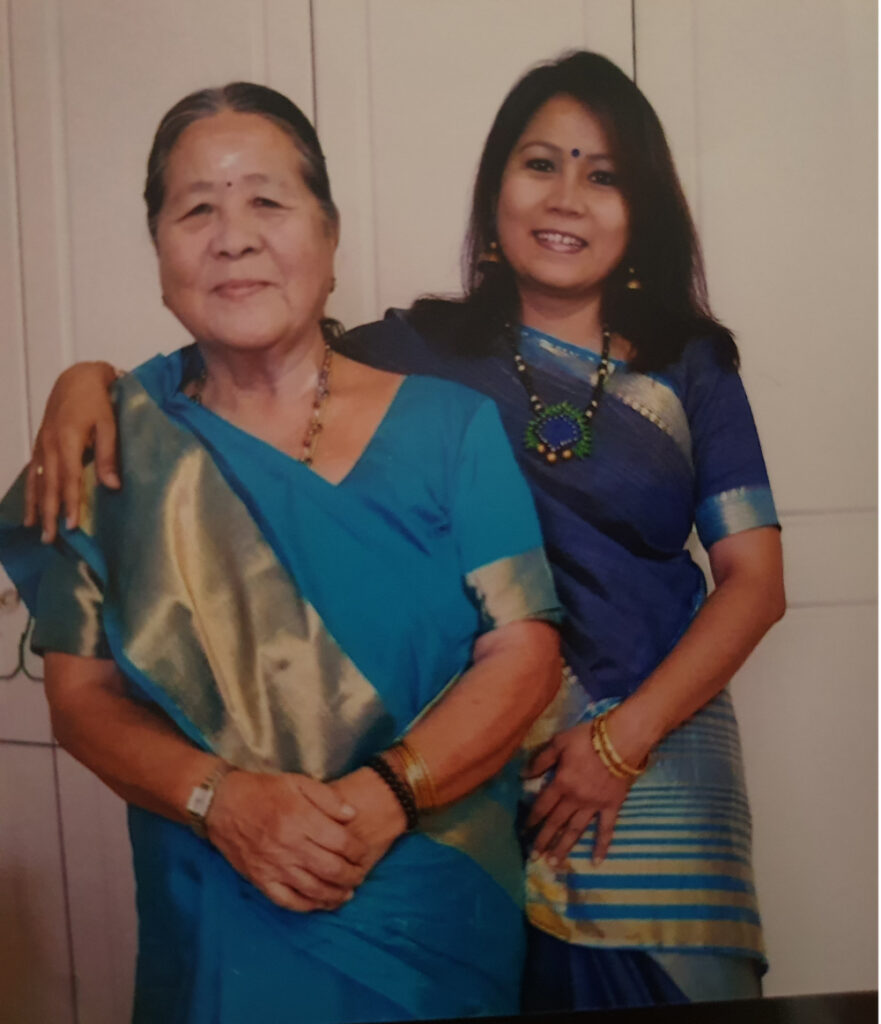
“I want my dancers to be informed and creative thinkers. They must explore, be uncluttered in their mind and apply the techniques of dance with skill and bring their audiences to a state of profound consciousness. This is the deep rootedness of Bharatanatyam and it has been my privilege to gain this knowledge and association,” says, Mrs Vijaya Nadeson, the Principal of Apsaras Arts Academy. Read on to learn more about her journey of this re-discovery. Growing up on Hindoo Road in the 1970s was idyllic. Our family of seven lived alongside Chinese and Malay families in quarters as my father, a senior foreman who oversaw labourers working in the area. A fire broke out in 1978 causing us to lose much of our valuables and we moved to Jalan Besar temporarily and finally settled in Towner Road after much hardship. During this period, my mother had enrolled both me and my sister for dance classes at the nearby Tanglin Club. It was not known to us that these classes were run by Apsaras Arts. But after the fire, our classes stopped. A few years later when I turned 9, my mother has started working and had taken interest in Tamil theatre [she went on to be a prolific actor on stage and television] and this time at Kallang Community Centre, again there were dance classes. My teachers were Muthulakshmi and Vijayarani. I performed many group items with other students. At 17, the teacher changed. Now, it was Neila Sathyalingam. The teaching style was substantially different and she got me to join the rest of her students at Cairnhill Community Centre and thereafter to her classes at People’s Association. I became one of the group dancers of Apsaras Arts, representing Singapore at many local and international events. The annual Chingay Festival was a highlight with larger than life, fantasy themes which gave Apsaras Arts and Mami recognition and acclaim. We travelled to many cities – Papua New Guinea, China, Japan, Hong Kong, Macau, Thailand. From Pushpanjali to Thillana to combined group dances with fellow Chinese and Malay dancers, we did it all. Our dance performances were launch-pads for Singapore’s branding as a multi-ethic cultured society. Towards the end of the 1980s, Mami also created noteworthy Indian dance-musicals involving local talents such as Meenakshi Kalyanam”, “Navaratri Nayagi” and “Ganesha.” Creating these works required extensive research, designing costumes and jewellery, finding sponsors to fund overseas tours to India and Sri Lanka, creating brochures and program booklets. Mami roped me for many of these assignments alongside dance. This work was also part of being a performer. She would say, “Girls, I want you to know and learn everything.” My sustained interest in Bharatanatyam became rooted with Neila Mami. Everywhere we went, Mami was with us, taking care of our needs, ensuring we were safely dropped off after a late-night rehearsal and a constant during all our overseas tours. She never left our side. My parents trusted her completely and were supportive of all the initiatives I embarked on with Mami. During this time, the Sathyalingams launched RasiSilks, a saree store with a difference. A venture ahead of its time. Working with an American designer, Sandy Edsall, incorporating Indian weaves such as Kanjeevaram, Mulberry, Tushar with distinctive motifs of peacock or lotus, a western clothing line also morphed alongside an exquisite saree collection. Mami roped me in to model these designs in print magazines, catalogue collections and also to be the front-runner for catwalk shows she organised to showcase the innovative range at RasiSilks. Many of the shows received great reviews cementing Mami’s design ideologies and styling skills which married traditional aesthetics with modern trends. Although she had received the Cultural Medelion in 1989, these development years resulted in her using her prize money to create her magnum opus, “Kannagi.”in 1998 which combined dance, music and spoken drama, a first in the local arts scene. Marriage and children came for me by then . Both Mami and Mama (Sathyalingam) were personally involved. As the family I joined also had roots from Sri Lanka, they took responsibility to guide me on their customs, traditions and meeting the expectations of my new in-laws and husband. It was not difficult for my new family to in turn support my continued dance career and they backed everything I did with the Sathyalingams. By the 2000s, Mami had gained greater confidence to navigate the changing society and tastes. Her choreography style began to adapt to incorporate elements of fusion and she would deftly use lyrically and melodically rich film songs to create items that would appeal to a mass audience. It distinguished us, Apsaras Arts as a serious dance company with semi-professional dancers that became notable for aesthetically pleasing works that was traditional, with a modern sensibility. We did many programs that combined instrumental pieces from the Cineworld with folk dances of Nagaland, Tamilnadu and traditional dances with fantasy costumes that brought to life, creatures and animals like swans, snakes or metaphorical emotions within the dance idiom like Navarasas, focusing on the negative ones like jealousy, anger and greed, easily relatable to our audiences. All of these formed the genesis of the thematic concept work that Apsaras Arts is known for and continues to do today. With this extensive exposure and mentoring from Mami, I became poised to begin teaching dance myself. She started to give me more assignments and over time, I took over the dance training she started at schools, through AEP (Assisted Education Program) and CCA (Co-curricular Activities). This challenging work, often involving non-Indian students with little or no background in Indian culture or dance which pushed me to choreograph and create thematic ideas through research and I was often guided by Mami’s advice, “Simplify the costumes, amplify the techniques.” Over the years, the schools I have worked with including Cedar Girls and St Anthony Cannossian Secondary Schools have won Gold with Honours for Indian Dance at the annual Singapore Youth Festival Inter-school competitions. Some memorable themes include “Fire & Moon” where fusion music was used, inspired from the Bollywood film, Waqt which incorporated strains of the “Shakuhachi”, the Japanese bamboo-flute and the theme would involve visualisation, music, rhythms with movement. Mami was often the guide in all my work with students. She would say, “Read your dancers – develop the passion in each of them, understanding their potential and give them all an opportunity to come together. Don’t leave anyone out.” Some students had additional challenges. I recall a hearing-impaired student who I would have to teach by demonstrating precisely and using text messages as a tool of communication and a buddy system. It was a slower process, requiring more patience but that student also performed amazingly in the final show. She also mentored my daughter’s Bharatanatyam training and blessed her arangetram in 2016. As the Sathyalingams aged and eventually passed away, they asked me to continue to stay connected to Apsaras Arts as the leadership transitioned to Aravinth Kumarasamy. It was generous of Aravinth to make me the Principal, overseeing all the faculty and students of the dance academy. Today, I not only guide and manage them, I also run the back-end of productions and manage our local and overseas shows. The direction of Apsaras Arts today is about the sustainability of the traditional artform and our mission is to provide the guidance to consistently bring it back to the centre. [ Apsaras Arts was recently conferred with the Steward of Intangible Cultural Heritage Award by National Heritage Board]. The youngsters of today have many distractions, often creating mixed pieces that don’t add value to the artform or the audience experience. I feel inspired by the legacy of Mami’s adventurous spirit to explore new ideas and the success of any good production is the efforts of a dedicated team. Without the fullest cooperation of each team member, no work is fully satisfactory. In recent years, while I have stopped performing, I have filled agility and youth in my mind and my emotional state is peaceful when I engage in thoughts of dance related work. My greatest triumph is engaging my non-Indian students and today our work in schools is increasingly challenging with CCA workplans, giving students thought-provoking challenges on themes, getting them to research on costumes and jewellery. I want my dancers to be informed and creative thinkers. They must explore, be uncluttered in their mind and apply the techniques of dance with skill and bring their audiences to a state of profound consciousness. This is the deep rootedness of Bharatanatyam and it has been my privilege to gain this knowledge and association.




